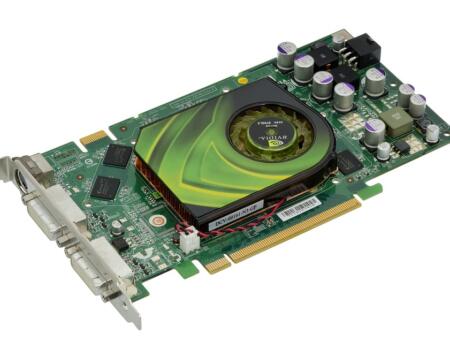The Basics of Digital Forensics
The Basics of Digital Forensics: A Comprehensive ReviewDigital forensics, also known as computer forensics, is the process of extracting, analyzing, and preserving digital evidence from digital devices to investigate cybercrimes, cyberattacks, and other digital-related incidents. With the rapid growth of technology and the increasing reliance on digital devices, digital forensics has become a crucial aspect of modern law enforcement, cybersecurity, and legal investigations. In this review, we will delve into the basics of digital forensics, exploring the key concepts, techniques, and tools used in this field.What is Digital Forensics?Digital forensics is the application of computer science and forensic science techniques to analyze digital devices, networks, and systems to identify, extract, and preserve digital evidence. The primary goal of digital forensics is to determine the cause and extent of a digital incident, such as a cyberattack, data breach, or malware infection. Digital forensics experts use a combination of technical skills, analytical thinking, and knowledge of legal procedures to collect, analyze, and present digital evidence in a court of law.Key Concepts in Digital Forensics

 Price: $34.79
(as of Jul 14, 2024 19:46:55 UTC – Details)
Price: $34.79
(as of Jul 14, 2024 19:46:55 UTC – Details)
- Chain of Custody: The chain of custody refers to the sequence of events and personnel involved in the handling and storage of digital evidence from the time it is collected to the time it is presented in court. Maintaining a clear and unbroken chain of custody is essential to ensure the integrity and admissibility of digital evidence.
- Digital Evidence: Digital evidence can take many forms, including files, emails, network traffic, and system logs. Digital evidence is typically collected from digital devices, such as computers, smartphones, and servers, and is used to reconstruct the events surrounding a digital incident.
- Forensic Imaging: Forensic imaging is the process of creating a bit-for-bit copy of a digital device, including all files, folders, and system data. Forensic imaging is used to preserve the integrity of digital evidence and to prevent any alteration or destruction of evidence.
- Analysis: Digital forensic analysis involves examining and interpreting digital evidence to determine its relevance, authenticity, and significance. Analysis techniques include file system analysis, network protocol analysis, and malware analysis.
- Reporting: Digital forensic reports are used to document the findings of an investigation and to present evidence in a court of law. Reports typically include a summary of the investigation, a description of the digital evidence collected, and an analysis of the evidence.
- Forensic Analysis Software: Forensic analysis software, such as EnCase, FTK, and X-Ways, is used to analyze digital evidence and to identify potential evidence. These tools provide a range of features, including file system analysis, network protocol analysis, and malware analysis.
- Network Forensics Tools: Network forensics tools, such as Wireshark and Tcpdump, are used to capture and analyze network traffic. These tools are used to identify network-related evidence, such as suspicious network activity or unauthorized access.
- Memory Forensics: Memory forensics involves analyzing the contents of computer memory to identify potential evidence, such as malware or unauthorized access. Memory analysis tools, such as Volatility and Rekall, are used to extract and analyze memory data.
- Disk Imaging: Disk imaging involves creating a bit-for-bit copy of a digital device, including all files, folders, and system data. Disk imaging tools, such as FTK Imager and EnCase, are used to preserve the integrity of digital evidence and to prevent any alteration or destruction of evidence.
- Cloud Computing: Cloud computing has introduced new challenges and opportunities for digital forensics. Cloud-based services, such as cloud storage and cloud computing, have made it easier for individuals and organizations to store and access digital data remotely. However, this has also created new challenges for digital forensics, including the need to collect and analyze data from cloud-based services.
- Internet of Things (IoT): The IoT has introduced new types of digital devices, such as smart home devices and wearables, which can potentially be used to collect and analyze digital evidence. However, the IoT has also created new challenges for digital forensics, including the need to analyze data from a wide range of devices and to ensure the integrity of digital evidence.
- Artificial Intelligence (AI) and Machine Learning (ML): AI and ML are being used to improve digital forensics, including the analysis of digital evidence and the identification of potential evidence. However, the use of AI and ML in digital forensics also raises concerns about bias and the potential for errors.
- Digital Evidence Storage and Preservation: The volume of digital evidence is growing rapidly, and digital forensics experts are facing challenges in storing and preserving digital evidence. This includes the need to ensure the integrity of digital evidence, to prevent alteration or destruction of evidence, and to ensure that digital evidence is available for future analysis.
- Stay Up-to-Date with the Latest Trends and Challenges: Digital forensics is a rapidly evolving field, and digital forensics experts must stay up-to-date with the latest trends and challenges.
- Develop a Strong Understanding of Computer Science and Forensic Science: Digital forensics experts must have a strong understanding of computer science and forensic science, including the principles of digital evidence collection, analysis, and presentation.
- Use the Right Tools and Techniques: Digital forensics experts must use the right tools and techniques to collect, analyze, and present digital evidence.
- Ensure the Integrity of Digital Evidence: Digital forensics experts must ensure the integrity of digital evidence, including the use of chain of custody procedures and digital evidence storage and preservation techniques.


 Price: $34.79
(as of Jul 14, 2024 19:46:55 UTC – Details)
Price: $34.79
(as of Jul 14, 2024 19:46:55 UTC – Details)
Discover more from Akiatech Solutions Blog
Subscribe to get the latest posts sent to your email.









